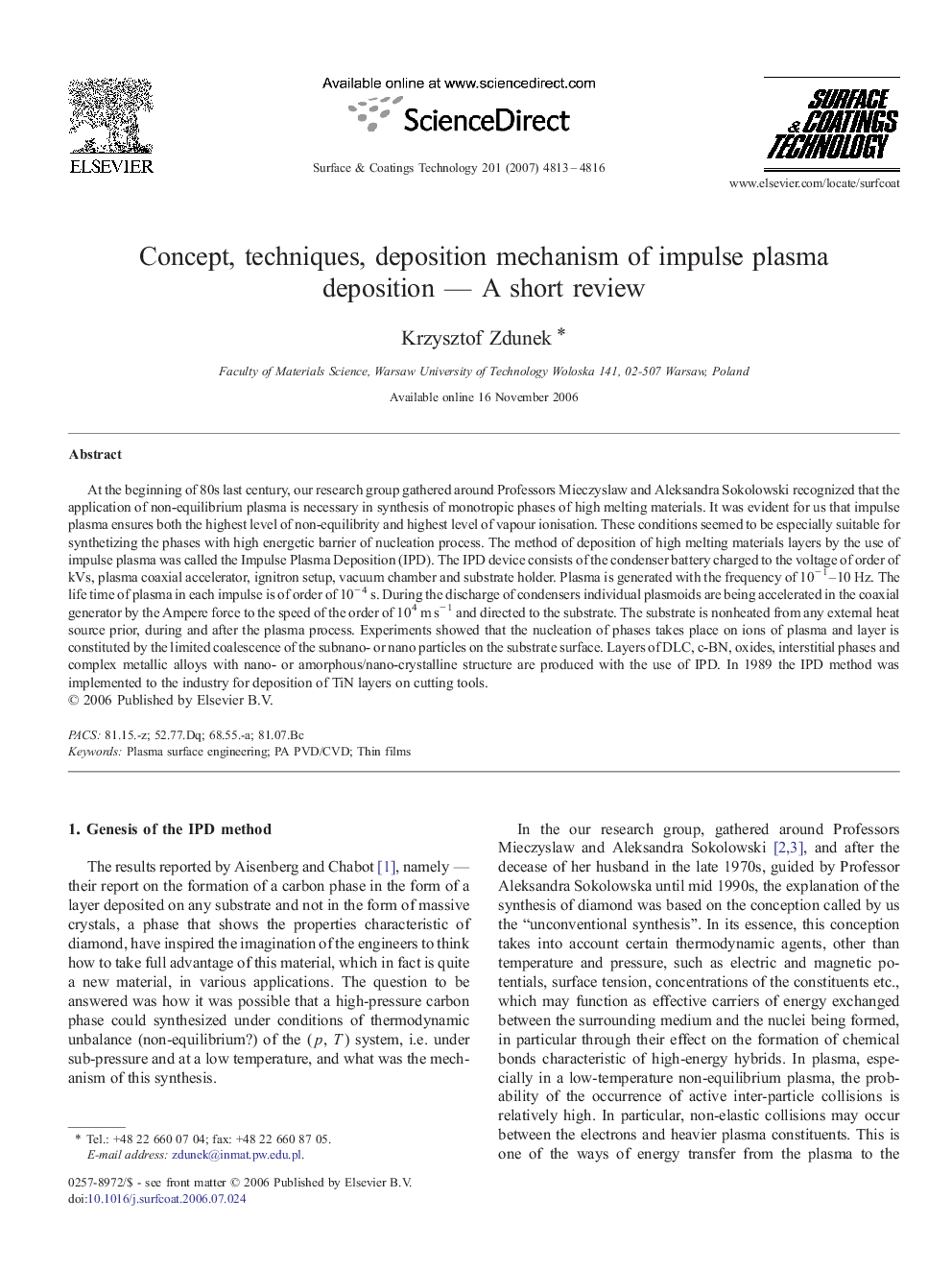| Article ID | Journal | Published Year | Pages | File Type |
|---|---|---|---|---|
| 1661528 | Surface and Coatings Technology | 2007 | 4 Pages |
At the beginning of 80s last century, our research group gathered around Professors Mieczyslaw and Aleksandra Sokolowski recognized that the application of non-equilibrium plasma is necessary in synthesis of monotropic phases of high melting materials. It was evident for us that impulse plasma ensures both the highest level of non-equilibrity and highest level of vapour ionisation. These conditions seemed to be especially suitable for synthetizing the phases with high energetic barrier of nucleation process. The method of deposition of high melting materials layers by the use of impulse plasma was called the Impulse Plasma Deposition (IPD). The IPD device consists of the condenser battery charged to the voltage of order of kVs, plasma coaxial accelerator, ignitron setup, vacuum chamber and substrate holder. Plasma is generated with the frequency of 10− 1–10 Hz. The life time of plasma in each impulse is of order of 10− 4 s. During the discharge of condensers individual plasmoids are being accelerated in the coaxial generator by the Ampere force to the speed of the order of 104 m s− 1 and directed to the substrate. The substrate is nonheated from any external heat source prior, during and after the plasma process. Experiments showed that the nucleation of phases takes place on ions of plasma and layer is constituted by the limited coalescence of the subnano- or nano particles on the substrate surface. Layers of DLC, c-BN, oxides, interstitial phases and complex metallic alloys with nano- or amorphous/nano-crystalline structure are produced with the use of IPD. In 1989 the IPD method was implemented to the industry for deposition of TiN layers on cutting tools.
